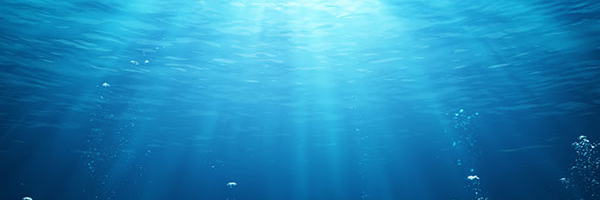*Please feel free to download any of the posters with the information about the types of plastics! 😀
There are thousands of different types of plastics, each with its own benefits and drawbacks. Some are made to be more flexible, others more brittle, some are made for holding chemicals, others for food. Plastics are among the most versatile types of material, with virtually thousands of uses. However, it is also an extremely toxic and dangerous material as well. Tiny pieces of plastics known as microplastics have the ability to infiltrate the bodies of any type of animal. Traces of microplastic pollution have already been found in many types of marine animals. However, to prevent plastic pollution from reaching the environment, many people have started to reuse and recycle these types of plastics. Recycling companies primarily separate the plastics into seven categories of the most used types of plastics: Polyethylene Terephthalate (PETE), High-Density Polyethylene (HDPE), Polyvinyl Chloride (PVC), Low-Density Polyethylene (LDPE), Polypropylene (PP), Polystyrene (PS), and others.
PETE
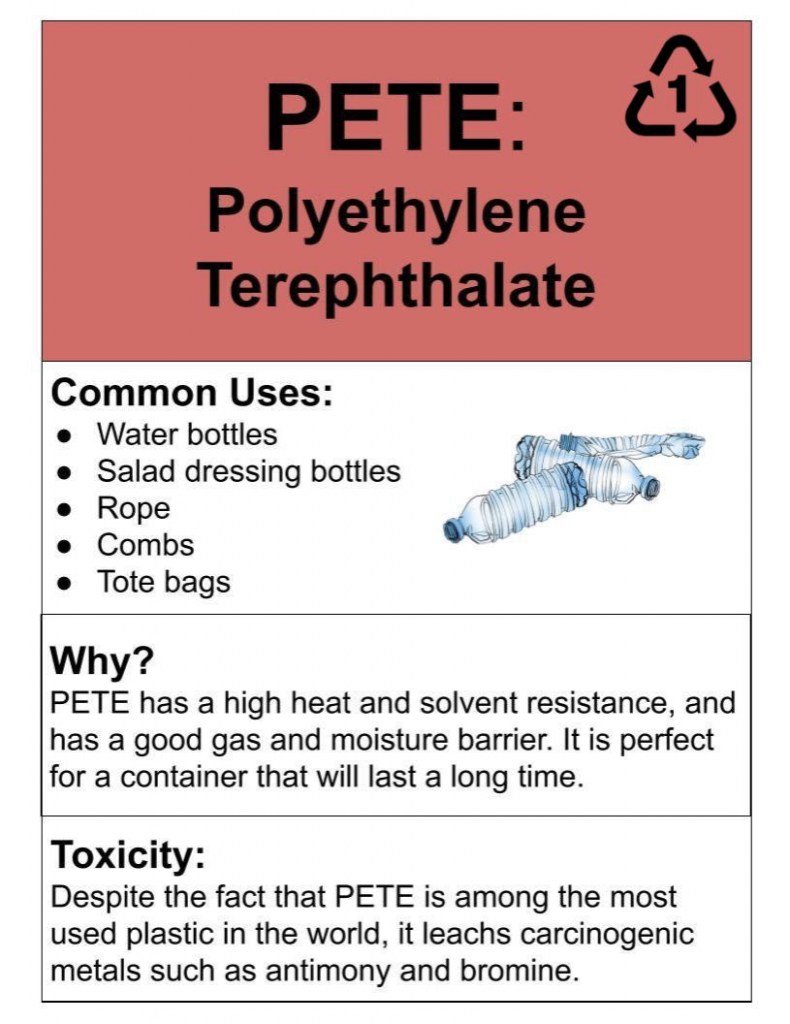
PETE is the most used type of plastic in the world, due to its versatility and its many uses for food storage. It has a high heat and solvent resistance, along with a great gas and moisture barrier, which makes it useful as a container for food. The most common use for PETE is for water bottles, however many dressing and condiment containers use PETE as well. However, despite the many uses of PETE, it does tend to leach carcinogenic metals such as antimony and bromine when exposed to sunlight or higher temperatures, or even when water is simply left in a container for too long. These metals can lead to nervous system malfunctions and psychological symptoms.
HDPE
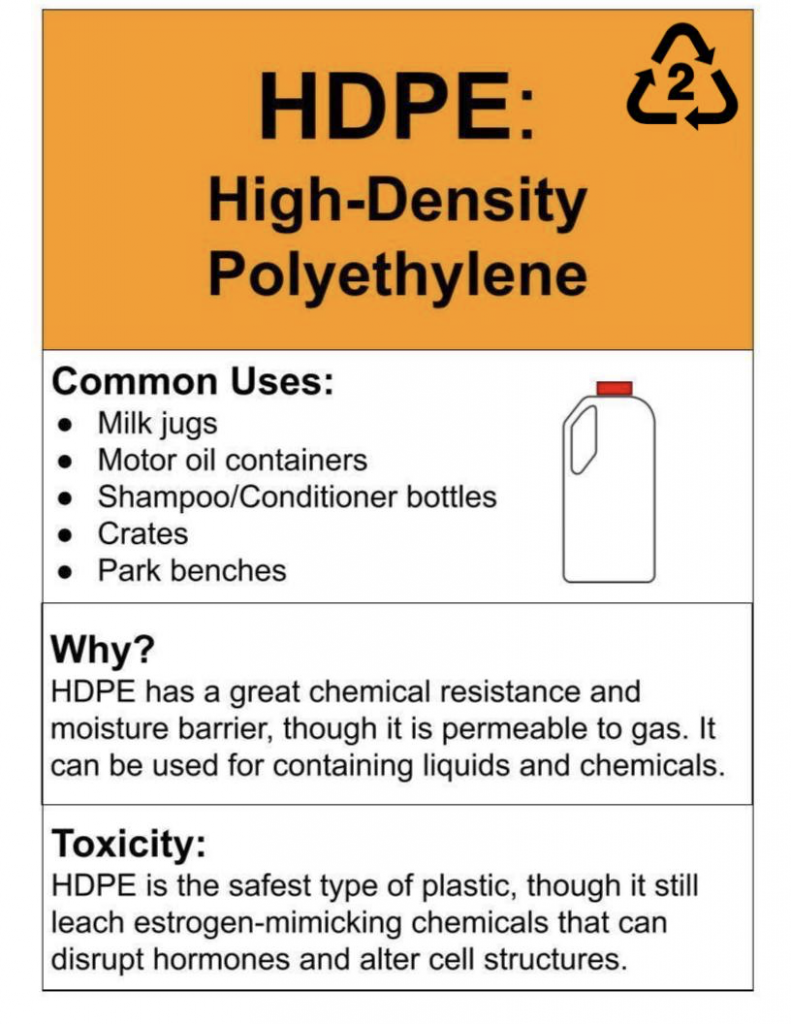
Like PETE, HDPE has a great moisture barrier and chemical resistance, however unlike PETE, it is permeable to gas. HDPE is mostly used to contain liquids and chemicals, from motor oil containers, to milk jugs, to shampoo and conditioner bottles. While thinner HDPE can be quite flexible, it is sturdy enough to make park benches and crates. HDPE has the lowest melting point out of all the seven types of plastics, which makes it ideal for recycling. It is the safest type of plastic, and is often considered to be a safer form of PETE, however, studies have still shown that it can leach estrogen-mimicking chemicals that change the structure of human cells and disrupt hormones.
PVC
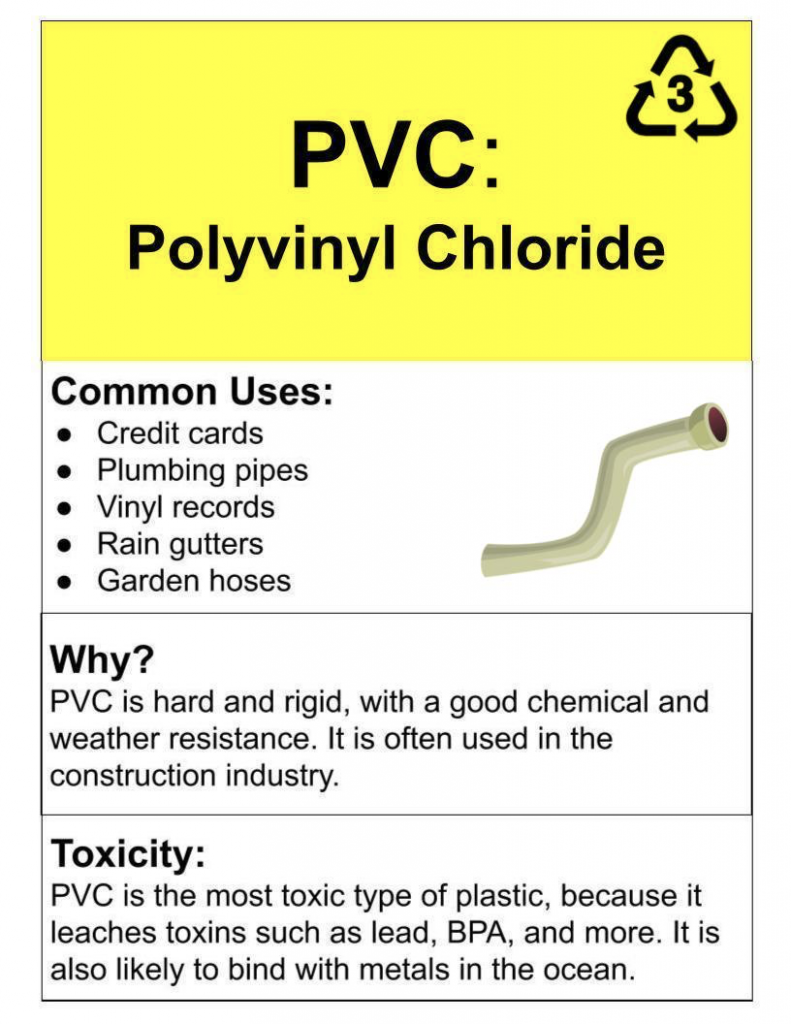
PVC is most often used as plumbing pipes, rain gutters, and garden hoses. It is a very rigid and brittle type of plastic, with good chemical and weather resistance, which is why it is most often used in the construction industry. However, PVC is also used as credit cards and cable insulation. PVC is used in these materials due to its great weathering ability. Unfortunately, PVC is also the most toxic type of plastic, containing the most amount of toxins to leach throughout its life cycle, including BPAs, lead, mercury, phthalates, and many more. Side effects from these toxins include, but are not limited to cancer, endocrine system disruption, autism, asthma, and has been linked to causing allergies as well.
LDPE
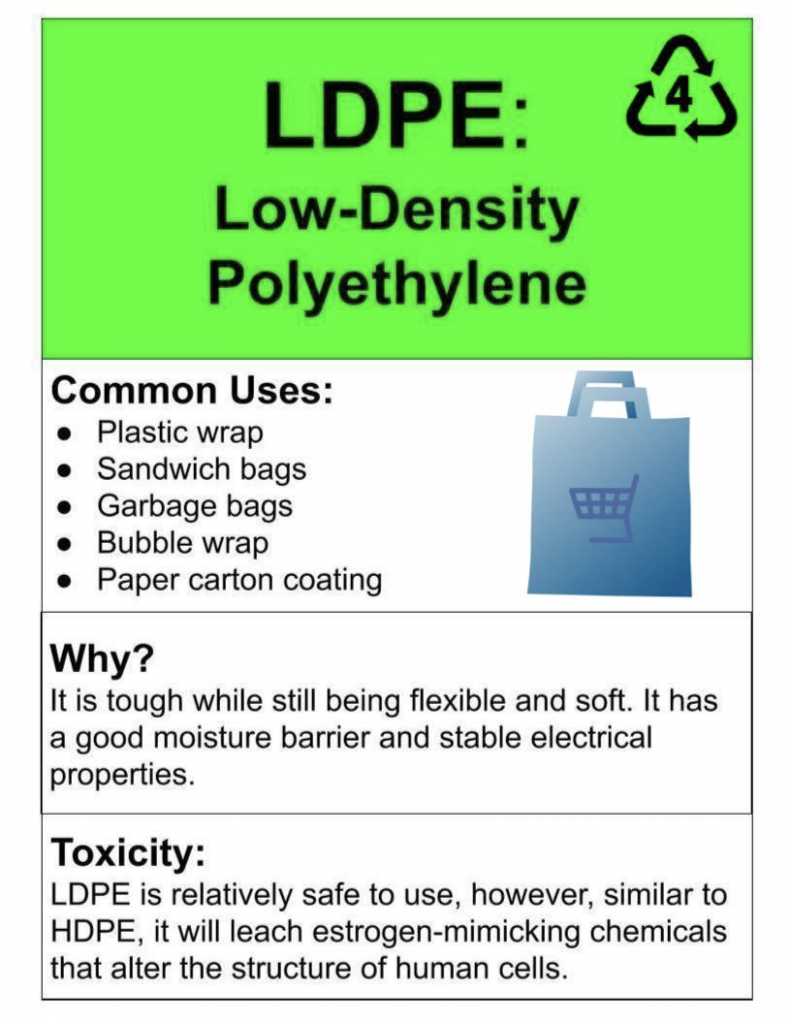
Often, LDPE is used in light-weight disposable materials such as sandwich bags, plastic bags, bubble wrap, and plastic wrap. LDPE is flexible and soft enough to be useful for containing a number of materials, while still being tough enough to support those objects. It also has a great moisture barrier, which is why LDPE is also used as a coating for paper cartons. Compared to other types of plastics, LDPE is relatively safe to use, however much like HDPE, it will leach the estrogen mimicking chemicals that disrupt hormones and alter cell structure.
PP
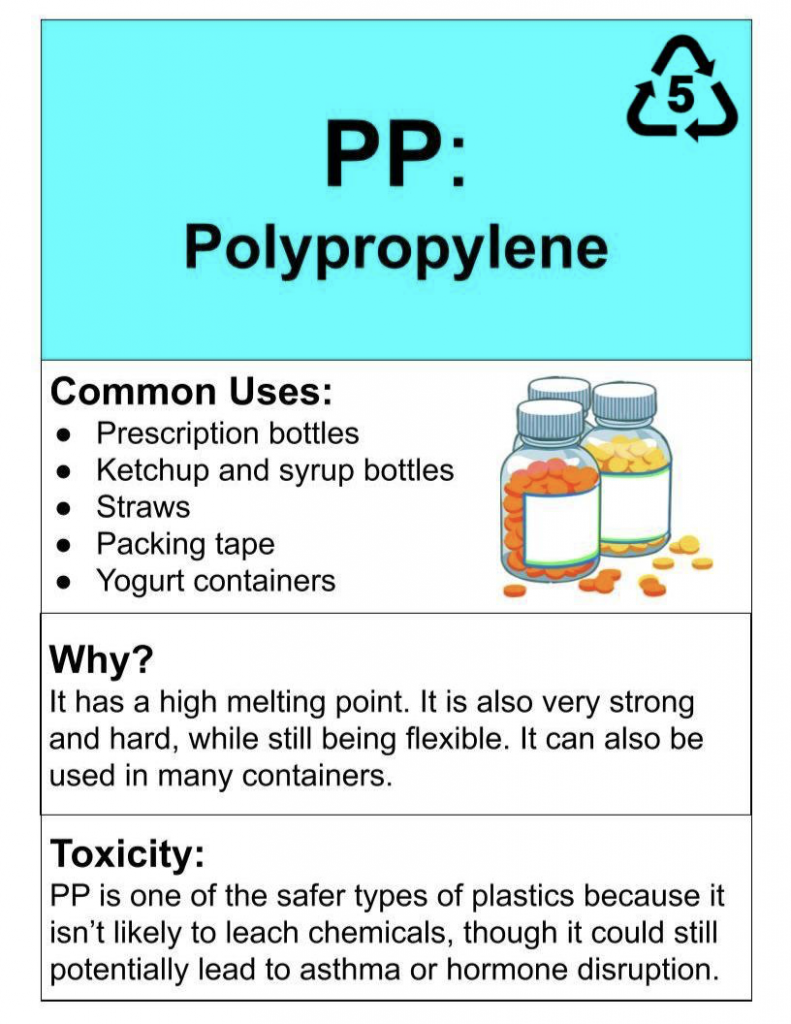
Due to the high melting point of PP, along with its toughness and durability, it is also used as a container, mostly as prescription bottles for medicine, although it is also used as condiment and yogurt containers. PP is also extremely flexible, which is why it is often used as straws and tape as well. PP is among the safer types of plastics, because it’s ability to withstand higher temperatures thus means it is less likely to leach chemicals, however, studies have shown that PP could still lead to asthma, or hormone disruption.
PS
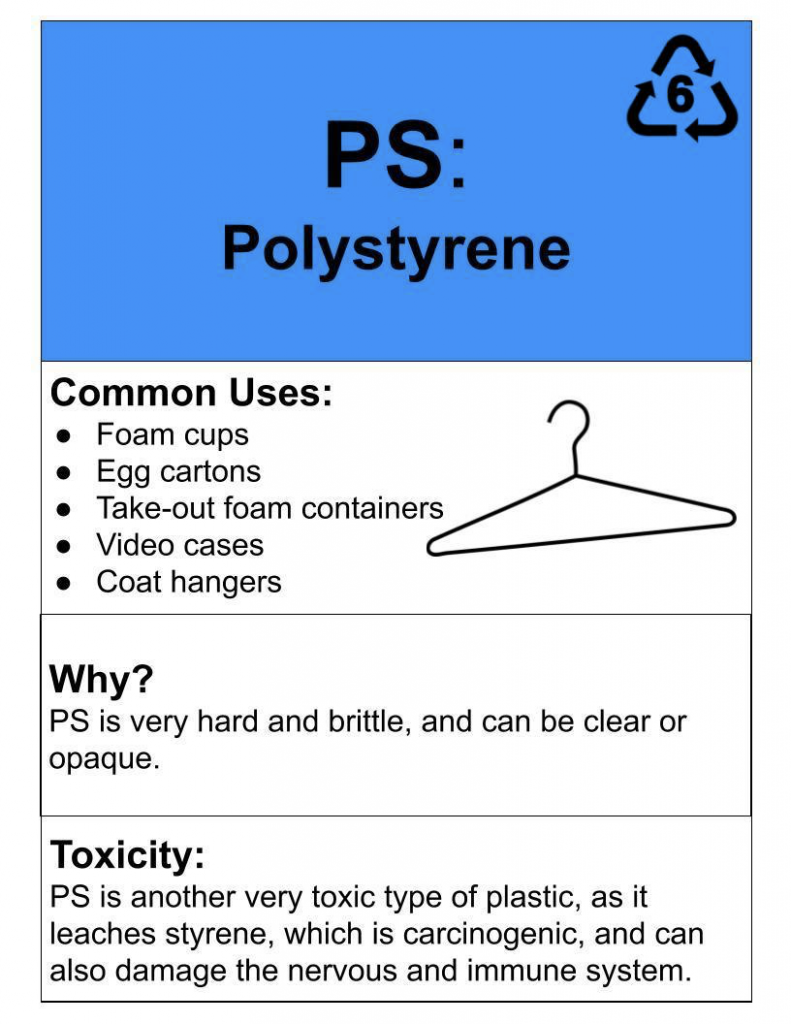
PS is among the more versatile types of plastics, having the capacity to be foamed, or rigid. It is most often used in take-out containers, and as package protection, however the hardness and brittleness means that it is also often used as video cases, coat hangers, and trays. However, it is one of the more toxic types of plastics as well, as it is affected by fats and solvents. Studies have shown that throughout its lifetime, PS can leach numerous toxins, including styrene, which causes cancer, and damages the nervous, and immune system, along with genetic material. It also has the potential to affect the lungs and the liver. PS is often affected by heat, so it is inadvisable to use it as a container for hot food or drinks.
Other
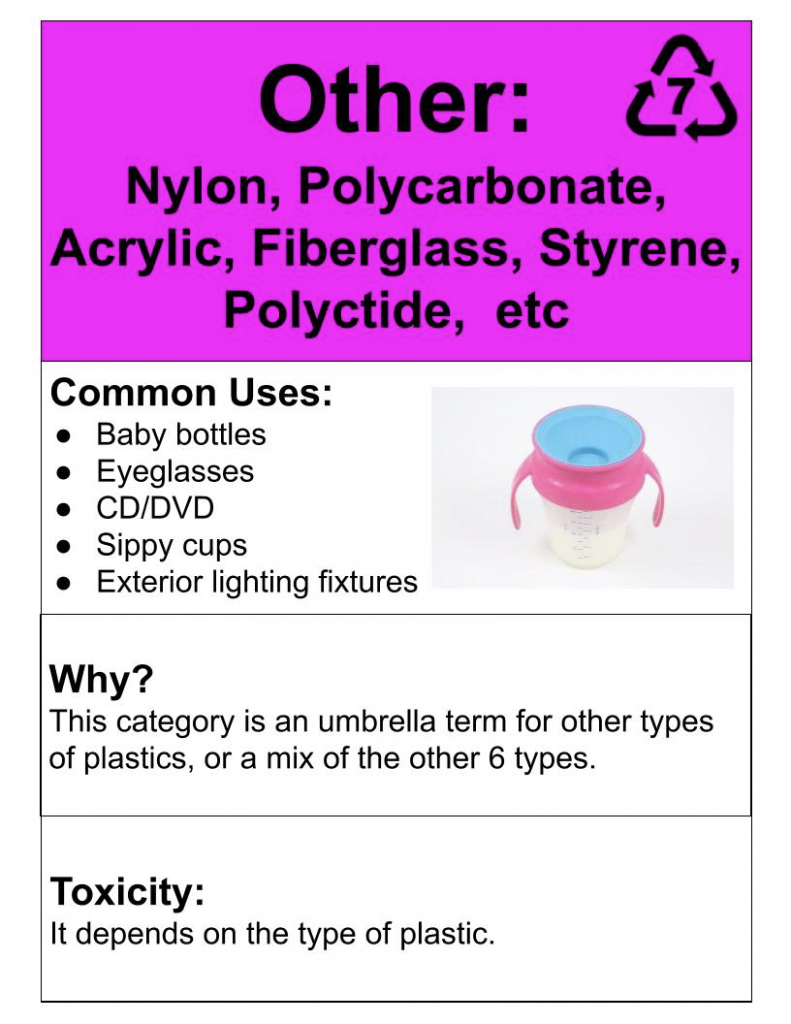
The seventh type of plastic isn’t so much a type, as an umbrella term for all the other types of plastics, or combinations of the previous six types that don’t fit under the previous six categories. Many sippy cups, CD/DVDs, and eyeglasses are created from plastics under this category. It is difficult to know the toxicity from this category because there are so many different types, however, chances are, they will leach BPA or BP5, which both disrupt hormones, and can also cause issues with tissue function, the nervous system, and growth and development.
Because plastics are so detrimental to our health and the environment, it is important to do something to alleviate this issue as soon as possible. Recently, I was a part of a group where we built a bench, which was made out of 200 pounds of plastics. During this time, we also collected colorful pieces of plastics to make murals. We also sorted the seven types of plastics in bins, to show others what the different types of plastics look like. Recycling and reusing pieces of plastics doesn’t have to take place at a recycling facility — it could take place anywhere. In your local communities, at school, or even at your house (link to ornament blog)! Reducing the amount of plastic in the environment doesn’t have to be a chore — we can make the process fun and enjoyable as well!
